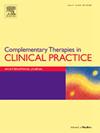Recent trends and disparities in screen-based sedentary behavior and physical activity among U.S. overweight youth, 2018–2022
IF 2.2
3区 医学
Q2 INTEGRATIVE & COMPLEMENTARY MEDICINE
引用次数: 0
Abstract
Background
Sedentary behavior (SB) and physical activity (PA) are crucial factors influencing health outcomes in overweight children and adolescents. However, recent changes in SB and PA trends among U.S. overweight youth have not been well described, limiting the development of evidence-based clinical and public health interventions.
Methods
Serial, cross-sectional analyses were conducted using data from the National Survey of Children's Health (NSCH) on U.S. overweight youth aged 6–17 years, spanning from 2018 to 2022. Linear regression models were employed to analyze time trends, with survey year as the exposure and recreational screen time (ST), adherence to the ≤2 h/day ST guideline, and adherence to the ≥1 h/day PA guideline as the outcomes. Multivariable-adjusted logistic and linear regressions were used to evaluate trends, adjusting for age group, sex, race/ethnicity, household income, and the highest education level of primary caregivers.
Results
Data from 11,865 individuals (mean age 12.3 years [SD 2.9]; 6417 [52.3 %] girls) were analyzed. From 2018 to 2022, the average ST duration among overweight youth increased from 3.7 h to 4.1 h per day, a statistically significant increase (p = 0.07). The estimated prevalence of overweight youth meeting the ≤2 h/day ST guideline decreased from 44.6 % to 30.0 % (p = 0.007). Additionally, the prevalence of meeting the ≥1 h/day PA guideline remained low and stable, ranging from 8.4 % to 12.3 % during the analysis period (p = 0.6).
Discussion
In this nationally representative sample of U.S. overweight youth, ST increased by nearly 0.4 h/day over the five-year observation period, while adherence to the ≤2 h/day ST guideline decreased. Adherence to the ≥1 h/day PA guideline remained consistently low. These patterns were consistent across sociodemographic subgroups (age group, sex, ethnicity, and household income). These findings underscore the need for enhanced public health initiatives targeting U.S. youth to reduce recreational screen time and promote a physically active lifestyle.
2018-2022 年美国超重青少年基于屏幕的久坐行为和体育活动的最新趋势和差异
背景久坐行为(SB)和体力活动(PA)是影响超重儿童和青少年健康结果的关键因素。然而,近期美国超重青少年SB和PA趋势的变化并没有得到很好的描述,这限制了循证临床和公共卫生干预措施的发展。方法利用美国全国儿童健康调查(NSCH)中关于美国6-17岁超重青少年的数据进行序列横断面分析,时间跨度为2018年至2022年。采用线性回归模型来分析时间趋势,以调查年份作为接触时间,以娱乐性屏幕时间(ST)、≤2 小时/天 ST 准则遵守情况和≥1 小时/天 PA 准则遵守情况作为结果。结果 分析了 11865 人(平均年龄 12.3 岁 [SD 2.9];6417 [52.3 %] 女孩)的数据。从 2018 年到 2022 年,超重青少年的平均 ST 持续时间从每天 3.7 小时增加到 4.1 小时,增长具有统计学意义(p = 0.07)。符合≤2 小时/天 ST 准则的超重青少年的估计患病率从 44.6% 降至 30.0%(p = 0.007)。讨论在这个具有全国代表性的美国超重青少年样本中,ST 在五年观察期内增加了近 0.4 小时/天,而遵守 ST 指南≤2 小时/天的比例则有所下降。每天运动时间≥1 小时的标准遵守率一直很低。这些模式在不同的社会人口亚群(年龄组、性别、种族和家庭收入)中是一致的。这些发现强调了加强针对美国青少年的公共卫生措施的必要性,以减少娱乐屏幕时间并促进积极的体育生活方式。
本文章由计算机程序翻译,如有差异,请以英文原文为准。
求助全文
约1分钟内获得全文
求助全文
来源期刊

Complementary Therapies in Clinical Practice
INTEGRATIVE & COMPLEMENTARY MEDICINE-
CiteScore
6.30
自引率
6.70%
发文量
157
审稿时长
40 days
期刊介绍:
Complementary Therapies in Clinical Practice is an internationally refereed journal published to meet the broad ranging needs of the healthcare profession in the effective and professional integration of complementary therapies within clinical practice.
Complementary Therapies in Clinical Practice aims to provide rigorous peer reviewed papers addressing research, implementation of complementary therapies (CTs) in the clinical setting, legal and ethical concerns, evaluative accounts of therapy in practice, philosophical analysis of emergent social trends in CTs, excellence in clinical judgement, best practice, problem management, therapy information, policy development and management of change in order to promote safe and efficacious clinical practice.
Complementary Therapies in Clinical Practice welcomes and considers accounts of reflective practice.
 求助内容:
求助内容: 应助结果提醒方式:
应助结果提醒方式:


